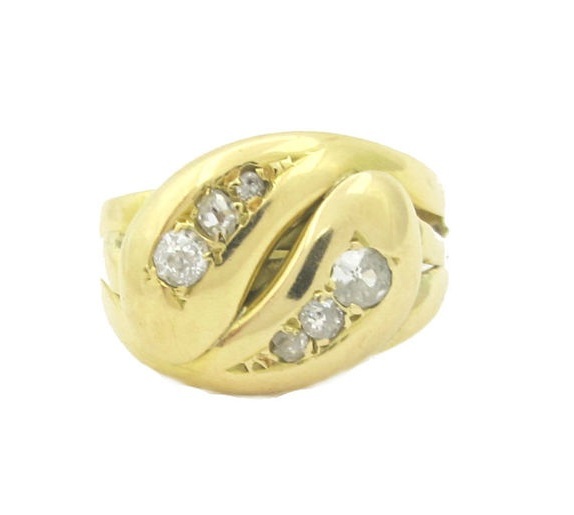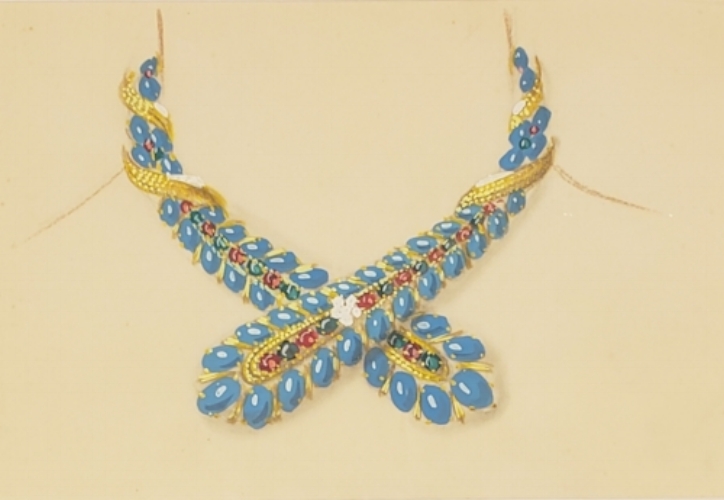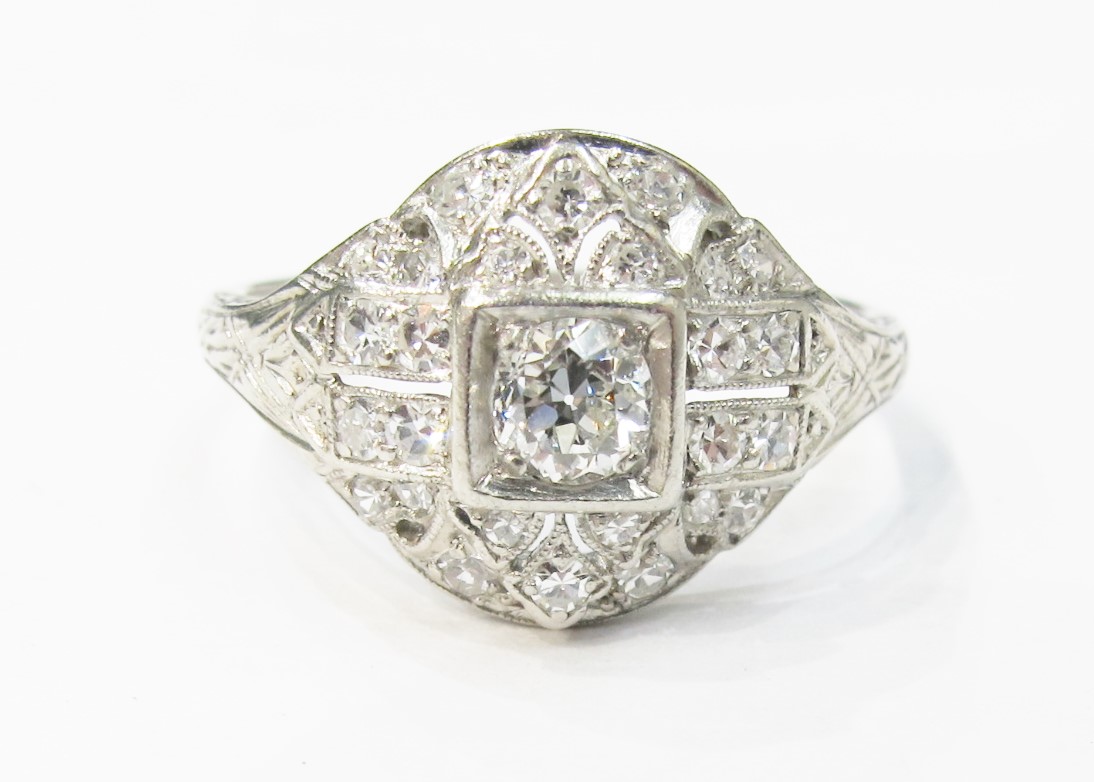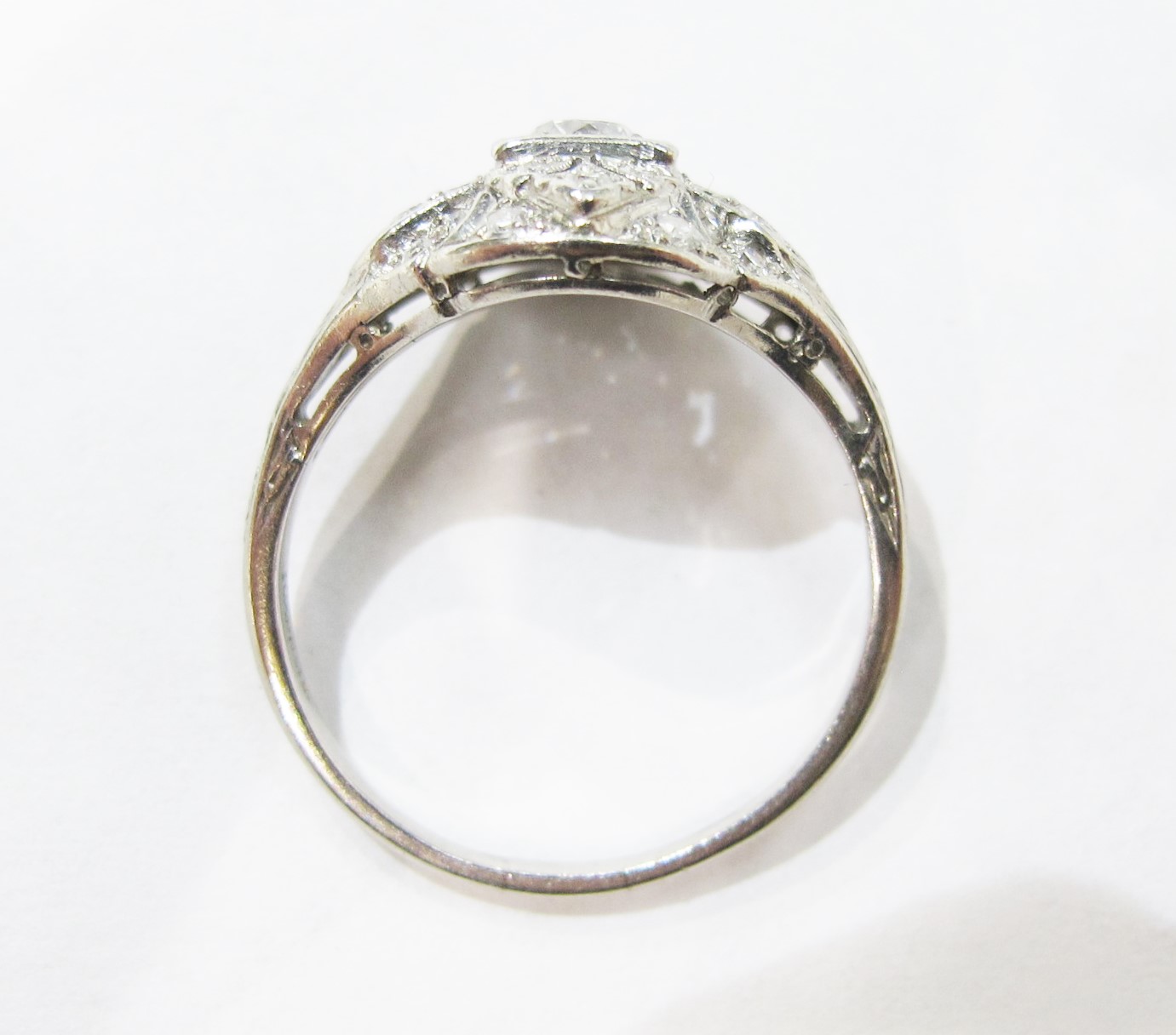Let’s try a little experiment. If I say “love and jewelry,” what image flashes into your mind? Considering the day and age, probably a diamond engagement ring or gold wedding band. But while these specific traditions are less than a hundred years old, people have been expressing their love through jewelry for, well, probably forever. And the kinds of jewelry they’ve used have been as varied, and as lovely, as love itself. So with Valentine’s Day just around the corner, here are a few examples of popular love tokens from throughout history.
Fede rings, depicting clasped hands, are one of the oldest forms of jewelry, dating back to Roman times; Europeans revived the style in the twelfth century, and their period of greatest prevalence lasted through the eighteenth (which is when ours is from!); today, the related claddagh ring is more commonly seen. The name comes from the Italian phrase mani in fede, meaning hands clasped in faith, and they were held to represent love, friendship, or betrothal. This sweet example seems to show a man’s hand tenderly holding a woman’s, identified by her tiny bracelet.
Giardinetti jewelry takes the shape of a bouquet, often in a vase (giardinetti is Italian for “little garden”). These rings and broaches, set with colorful gemstones or, like ours, with diamonds, were particularly popular during the Georgian era, and often traded by friends and lovers. Think of them as the jewelry equivalent of a bouquet of flowers!
Snakes have long been a popular jewelry motif, but not everyone realizes that they’re a symbol of love! Eternal love, to be precise. While dating to ancient times, serpent jewelry enjoyed a massive resurgence during the nineteenth century after a young Queen Victoria received a snake engagement ring from her beloved Prince Albert. These snake rings do indeed date to the Victorian era, and put a particularly romantic twist on the style (no pun intended) with their designs of two snakes intertwined.
Lockets have been gracing necklaces, and sometimes rings and brooches, for centuries; then as now, they’re treasured for their ability to hold images or small items evoking someone beloved to the wearer. Before the dawn of photography, they were most likely to contain a miniature painted portrait or, as famously depicted in Wuthering Heights, a lock of hair. Starting in the mid-nineteenth century, some larger examples held daguerreotypes, an early form of photograph. With the advent of modern photography techniques around the turn of the century, however, the ability to take, reproduce, and resize pictures became accessible to the masses. As more and more people possessed photos of their loved ones, the locket reached even higher levels of popularity as the perfect way to keep them close.
Beautiful, durable, and intimate, it’s easy to see why people have used jewelry to say “I love you” for centuries, and in so many imaginative ways! We’re just grateful that, all these years later, these pieces keep a whole history of love alive. It’s clear that love and jewelry are, in themselves, a match made in heaven.






























